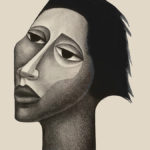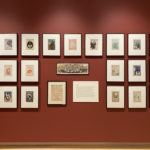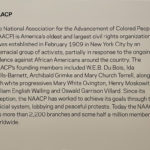After being able to start going to museums and galleries this summer, first in Chicago and Milwaukee, it was exciting to return to the Pacific Northwest in time to see a beautiful exhibition at the Tacoma Art Museum: The Kinsey African American Art and History Collection. In its final week, the exhibition closes on December 5th before going on to its next venue Pepperdine University in early 2022. This is an extremely beautiful and powerful show from the private collection of Bernard, Shirley, and Khalil Kinsey.
Their collection of paintings, sculpture, prints, photographs, and historical documents is personal – art that speaks to and resonates with them – and it’s universal as well, speaking to all who have the opportunity to view it. It is a testament to the Kinsey’s generosity that they are sharing these magnificent works with the public, that for some months they are being separated from these deeply moving artworks and documents.
Among the many art works of note is a portrait of Charles White in front of his mural in 1943 by acclaimed photographer Gordon Parks (born this day in 1912). Another portrait is Elizabeth Catlett’s exquisitely drawn portrait of Jackie, a black and white lithograph from 1985. Close by is a lithograph by Robert Blackburn, a noted print artist who shared his love of and knowledge about printmaking via opening his NYC studio to all.
Mixed in with the artworks are letters, poetry, and books. One poem is Dinner Guest, Me, typewritten and signed by Langston Hughes. A letter from Malcolm X to Alex Haley in 1963 talks about getting together in hopes of finishing the book they were working on. The Autobiography of Malcolm X was published in 1965, the year that Malcom X was assassinated.
In the adjoining gallery are many early photos, documents, books, that record “the achievements and contributions of black Americans from before the formation of the United States to the present times” – and also how they were enslaved and then brutally discriminated against across this nation. One document, a page of the 1801 New York census, records a voter as one person if free, 3/5 if a slave; it is difficult to find words to describe this, to see it, and to comprehend that this was accepted practice. Another wall presents covers of The Crisis, the official magazine of the NAACP; the accompanying wall text describes the beginning of the NAACP.
- Charles White, 1943, photograph by Gordon Parks
- Elizabeth Catlett, Lithograph, 1985
- The Crisis Covers
- NAACP Wall Text
- Lithograph






